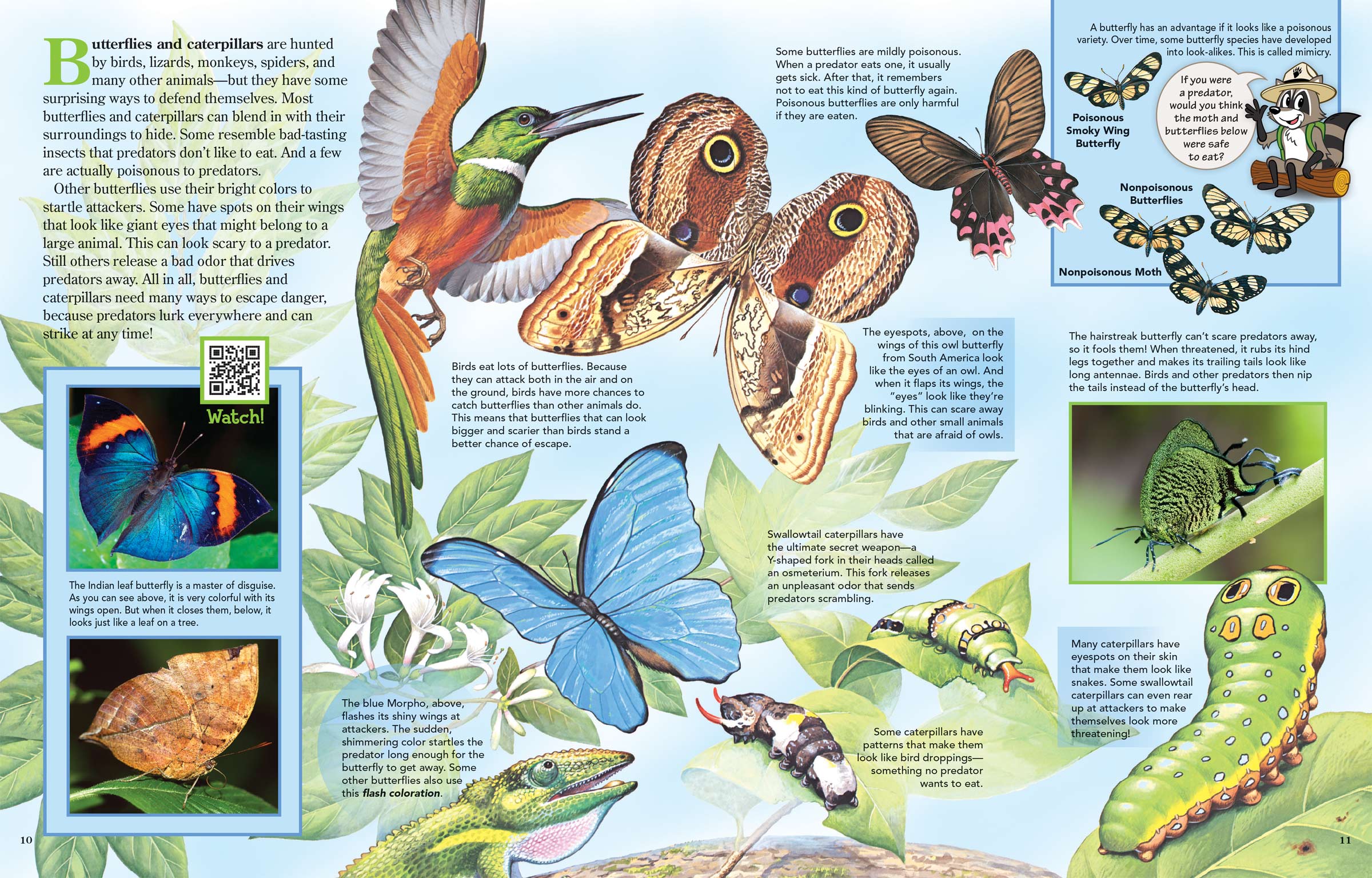
How a Butterfly Plays Defense
ByButterflies and caterpillars are hunted by birds, lizards, monkeys, spiders, and many other animals—but they have some surprising ways to defend themselves. Most butterflies and caterpillars can blend in with their surroundings to hide. Some resemble bad-tasting insects that predators don’t like to eat. And a few are actually poisonous to predators.
Other butterflies use their bright colors to startle attackers. Some have spots on their wings that look like giant eyes that might belong to a large animal. This can look scary to a predator. Still others release a bad odor that drives predators away. All in all, butterflies and caterpillars need many ways to escape danger, because predators lurk everywhere and can strike at any time!
Birds eat lots of butterflies. Because they can attack both in the air and on the ground, birds have more chances to catch butterflies than other animals do. This means that butterflies that can look bigger and scarier than birds stand a better chance of escape.
The Indian leaf butterfly is a master of disguise. As you can see above, it is very colorful with its wings open. But when it closes them, below, it looks just like a leaf on a tree.
The blue Morpho, above, flashes its shiny wings at attackers. The sudden, shimmering color startles the predator long enough for the butterfly to get away. Some other butterflies also use this flash coloration.
Some butterflies are mildly poisonous. When a predator eats one, it usually gets sick. After that, it remembers not to eat this kind of butterfly again. Poisonous butterflies are only harmful if they are eaten.
A butterfly has an advantage if it looks like a poisonous variety. Over time, some butterfly species have developed into look-alikes. This is called mimicry. If you were a predator, would you think the moth and butterflies below were safe to eat?
Above: The eyespots on the wings of this owl butterfly from South America look like the eyes of an owl. And when it flaps its wings, the “eyes” look like they’re blinking. This can scare away birds and other small animals that are afraid of owls.
The hairstreak butterfly can’t scare predators away, so it fools them! When threatened, it rubs its hind legs together and makes its trailing tails look like long antennae. Birds and other predators then nip the tails instead of the butterfly’s head.
Swallowtail caterpillars have the ultimate secret weapon—a Y-shaped fork in their heads called an osmeterium. This fork releases an unpleasant odor that sends predators scrambling.
Many caterpillars have eyespots on their skin that make them look like snakes. Some swallowtail caterpillars can even rear up at attackers to make themselves look more threatening!
 Some caterpillars have patterns that make them look like bird droppings—something no predator wants to eat.
Some caterpillars have patterns that make them look like bird droppings—something no predator wants to eat.

